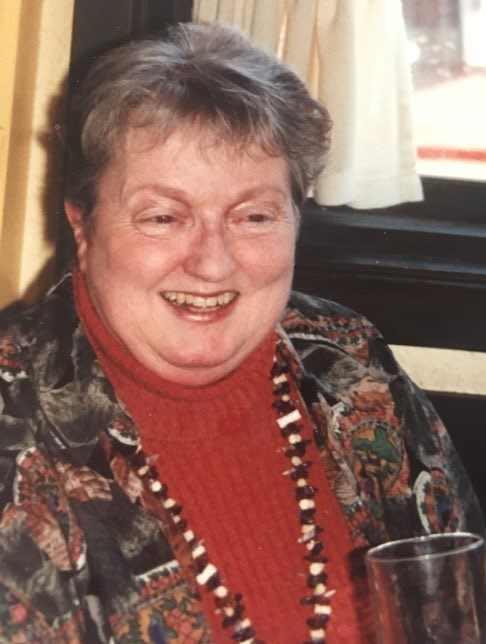
Early voice lessons
Dear Kirsten Hermansen. She was soprano soloist in Handel’s Messiah with Odense Madrigal Choir in 1958, with the choir where my parents met each other and in the year they married.
Her voice was in my ears from I was born with the recording of Nielsen’s Fynsk Forår – Springtime on Funen, it was played repeatedly at home and taught me to sing before I could talk. I could not understand what she sang, it just sounded so lovely, and the last high note was just incredibly wonderful.
A childhood full of song
Kirsten Hermansen, 21 February 1930 – 8 November 2015. From her debut as Lucia in The Rape of Lucretia at The Royal Theatre in Copenhagen until her retirement in 1985, Kirsten Hermansen was one of the Opera’s most used sopranos. Thoroughly musical and with an iron work discipline, she mastered every challenge, and even if she lacked in worldly glamour and sharp elbows, it became apparent that in her the theatre had one of its best and most secure cards.
At the same time she was one of Danish Radio’s most frequently asked classical singers in the opera- and operetta repertoire. Kirsten Hermansen grew up in a musical home. Her father, who originally was an image cutter, was an amateur singer with a good tenor baritone, her mother was a trained seamstress. There was a lot of singing in the childhood home, and the most by Kirsten Hermansen who was the youngest of five siblings. She entered the Danish Radio’s Girl Choir and was quickly assigned both singing and speaking parts in the choir’s musical productions. As a high school student she achieved national fame when she gave voice to the Princess in the Tinder Box, the first Danish all-night cartoon after Andersen’s fairy tale, in 1945.
At the age of 17 she had her first voice lessons with Eskild Rask Nielsen, and after high school, she was accepted to The Royal Danish Academy of Music. Her teacher here was Holger Byrding, with whom she continued her studies for some years after her graduation from the Academy. Already while studying, she played one of the children in Britten’s Albert Herring at The Royal Theatre. Her debut recital from the Academy’s class of soloists in 1954 was a major success. The program was colourful and consisted of classical songs, Shakespeare Sonnets by Knud Høgenhaven and arias by Mozart. 1953-55 she attended the opera school, where Anna Borg was her dramatic teacher.
(Sten Høgel, Danish Female Biographical Lexicon, 2003)
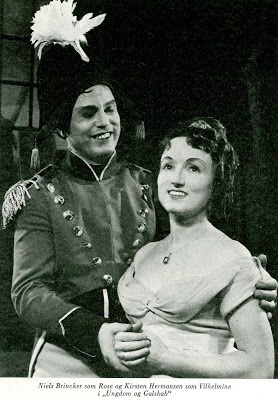
Meeting the little great artist
1985, when I was 20 years old, my otherwise excellent voice teacher at the Institute of Musicology in Copenhagen, Vibeke Brincker, recommended me to stop lessons with her and instead ask Kirsten if she would teach me. She thought – very generously – that Kirsten would be better than herself, if i wanted to advance with my voice.
Kirsten had taught the vocal lighthouses Michael Melbye and Johan René Schmidt and had to have special gifts with men…
I called and heard in the receiver „Kirrrsten Hermarnsen“ (she spoke with an incredible mix of fine lady high Danish and working class Copenhagen lingo), and frightened out of my wits I stumbled, that I would like to study singing at the Academy and she had been recommended as a teacher. „By whom?“ Vibeke Brincker. „Oh. Her. She is married to Brincker (a retired tenor from The Royal Theatre). Does he agree?“ Yes. In that case I could come for an audition in 6 weeks (six eternities).
I came, met a fat little lady with a round mouth, I sang and she was reservedly positive. Said, that I reminded her of two persons, and that I could come back. In my second lesson she said „Listen, I know very well that you are gay. What you do privately is your own matter, but when you come here, you must always walk like the son of a king!“ I have done that ever since. I wanted to sing loud and wild, she demanded that I always sing beautifully. „The butcher’s apprentice also has a big voice, but Ill be damned it that makes it into art!“
Mozart and coloratura
Kirsten Hermansen got her first roles at The Royal Danish Theatre due to other colleagues‘ cancellations. Also later, she much too often got her big assignments as a replacement. After a successful Lucia in The Rape of Lucretia followed Susanna in The Marriage of Figaro in a famous production by Carl Ebert. It was a breakthrough and she played this role for 17 years, continually adding new nuances to her interpretation. The part of Susanna proved that though she had fine abilities as a coloratura, she was by nature a lyric soprano.
Over the years, she played many Mozart parts, Blonde in The Abduction from the Seraglio, Despina and Fiordiligi in Così fan tutte and The Queen of the Night in The Magic Flute, a role she had already sung in Oslo. In order to save a performance of that opera at The Royal Theatre, one night she even covered two very different parts, the First Boy and the Queen of the Night. As the demonic astral queen she uncovered a sparkling passion, which the soubrette roles had not given her the occasion to explore. She also sang The Queen of the Night in Stockholm.
Kirsten Hermansen enjoyed a special collaboration with the mezzo soprano Else Margrethe Gardelli. Their voices sounded exemplary together and the theatre used it by letting them sing the sisters in Così fan tutte and Hansel and Gretel in the Humperdinck fairy tale opera together.
(Sten Høgel, Danish Female Biographical Lexicon, 2003)
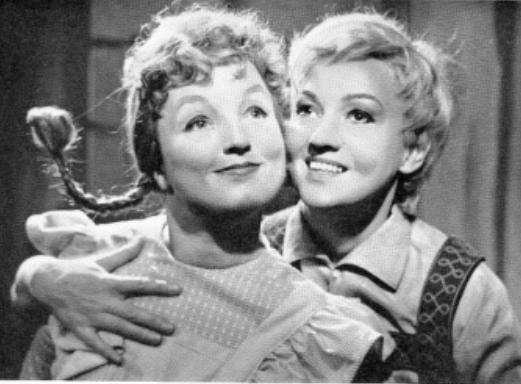
A psychopathic test of patience
Kirsten gave me lyric songs like the Danish composer Lange-Müller’s Serenade from Once Upon a Time and Water Lily and Beethoven’s Adelaïde and to constructively stimulate my wild temperament Thou Shalt Break Them from Handel’s Messiah. She let me practise them for one and a half year, (secretly i also learnt the entire Schubert’s Die schöne Müllerin) before she would let me audition for The Royal Danish Academy of Music. I have never in my life been so ready for anything as for that audition.
It had been a slow day, and Peter Bastian from the jury had said, „Now I would very much like to hear a real psychopath“ and Kirsten had retorted, „You just wait. He will come this afternoon!“ I entered, opened my mouth, and she immediately put a finger in front of her mouth, Way too loud. I reduced my volume and sang and sang. And was accepted. „Well Mads. From now on nothing will be easy anymore.“ I did not really believe her. But she was so right.
Gilda, her favourite part
Kirsten Hermansen’s all time favourite part was Gilda in Rigoletto. With Ib Hansen in the title role she created a performance of merit, and her delivery was described by critics as a „blatant victory“.
The voice grew, and virtuoso coloratura parts like Zerbinetta in Ariadne on Naxos were exchanged with more lyric roles like Norina in Don Pasquale. In the contemporary repertoire she excelled in the difficult coloratura role as Hilda Mack in H.W. Henze’s Elegy for Young Lovers.
(Sten Høgel, Danish Female Biographical Lexicon, 2003)
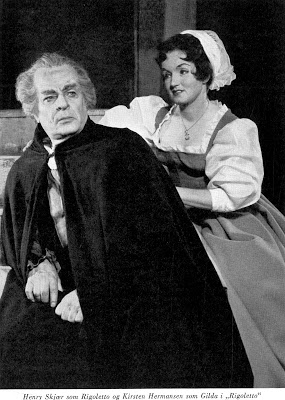
Go down to the harbour and find yourself a sailor
She was so naughty and at the same time so musical and aware of sound. „It is wonderful….ly out of tune“ „If you have no overtones in your voice, nobody will be able to hear you, no matter how loud you howl.“ „In recital you must never get into the red field. In opera at maximum once a night.“ At the same time she say to the too well-behaved sopranos, „You should go down to the harbour and find yourself a sailor and come back in two weeks. No, three weeks.“
For unknown reasons she never gave me that piece of advice. She was herself such a mixture of a refined artist of sound and music and a chaotic private life. Those stories may rest nicely and sweetly with her. She loved her dogs, her red wine, her students, her daughter Eva and her single grandchild and astrology. „Once an astrologer told me that if I had not been able to sing, I would have ended up in a mental institution. Thanks. I’m well aware.“ So was I.
From plain maids to the Marschallin
The conductor Martellius Lundquist was very significant in Kirsten Hermansen’s development into the larger soprano roles. Rehearsing the role of Musetta in La Bohème at the Opera of Funen, he successfully through an intensive work with Kirsten Hermansen achieved to connect the fine overtones in her voice with a larger fullness and more corporal support, which also made another Puccini role Madame Butterfly at the Royal Theatre shine.
Generally, the plainer maids were Kirsten Hermansen’s field. She bestowed them with humour, poetry, a certain jovial robustness and a scenic presence which was always captivating. It was therefore not written in the stars that the Marschallin in the Rosenkavalier in 1976 would be her last big part. The aristocratically refined was not directly available to her, and with her small height she was also physically not so well suited to the role. But she sang it beautifully, and she succeeded in creating a convincing character on different premises than the general ones.
(Sten Høgel, Danish Female Biographical Lexicon, 2003)
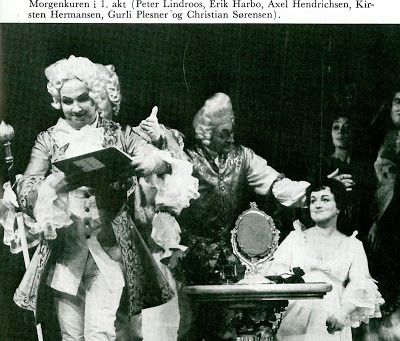
To have to stop
It is difficult to describe the closeness you achieve in the intimate collaboration between voice master and student. One of the worst things I have had to do was to say that I wanted to change teachers. She had come back tired after a prolonged stay in hospital and for a long time not much happened in her lessons. She was hurt and disappointed, felt betrayed. It was simply terrible. But I insisted that i had to move on. Four or five years later she said to me, „I understand well why you had to stop with me.“ And we were friends until the end.
Kirsten retired as a singer around 1984 after a concert with Handel’s Messiah. „I had practised all the coloraturas the entire fall. I had to take a breath in the long Rejoice – coloratura and otherwise all went well. And then the paper Politiken wrote ‚She can still do it.‘ After all that work! And then I bloody quit.“
https://www.dr.dk/radio/p2/p2-guldkoncerten-p2d/p2-guldkoncerten-messias-i-radiohuset
Kirsten Hermansen a soprano soloist in Handel’s Messiah. Kirsten Hermansen, soprano, Else Paaske, mezzosoprano, Kaj Hansen, tenor and Bent Norup, bass. Danish National Radio Symphony Orchestra, The Danish Radio Chorus, cond. John Alldis, 1973.
There were shepherds…Glory to God… Rejoice…Then shall the eyes…He shall feed his flock… Come unto him 52:10-01.08:22, How beautiful are the feet 1:59:02-2.01:40, I know that my redeemer liveth 2.15:29-2.22:46
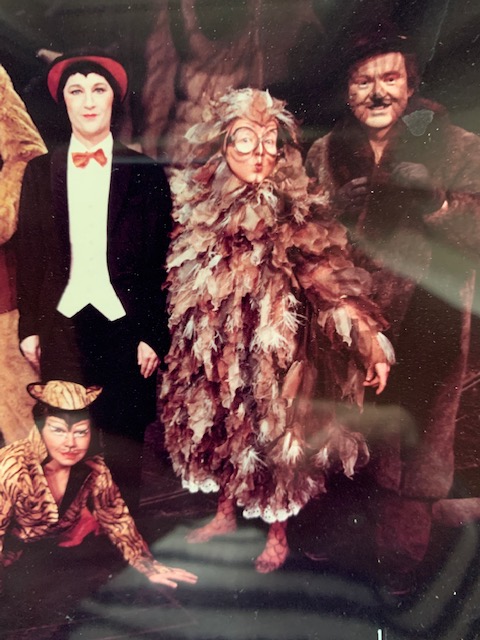
Other stages and concert halls
Kirsten Hermansen made guest appearances at The Opera of Jutland in Aarhus and The Opera of Funen in Odense just as she has been trusted with numerous oratorio- and recital assignments over the years.
She retired as an opera singer in 1983. – Kirsten Hermansen has received many honours, among them the price of honour of Danish Music Critics in 1956, Elisabeth Dons‘ memorial award (as the first ever) in 1962 and Tagea Brandt’s Travel Award in 1967. She received a knighthood in 1969.
The Danish Radio constantly asked for her services. She sang many concerts and made recordings often light music with The Danish Radio Chamber Orchestra. She was also used for excerpts of half-forgotten Danish works from the golden age of the early 19th century, by composers like C.E.F. Weyse and Frederik Kuhlau. Her clear pronunciation in connection with her free sound and fine phrasing made her much appreciated by both colleagues and audiences.
(Sten Høgel, Danish Female Biographical Lexicon, 2003)
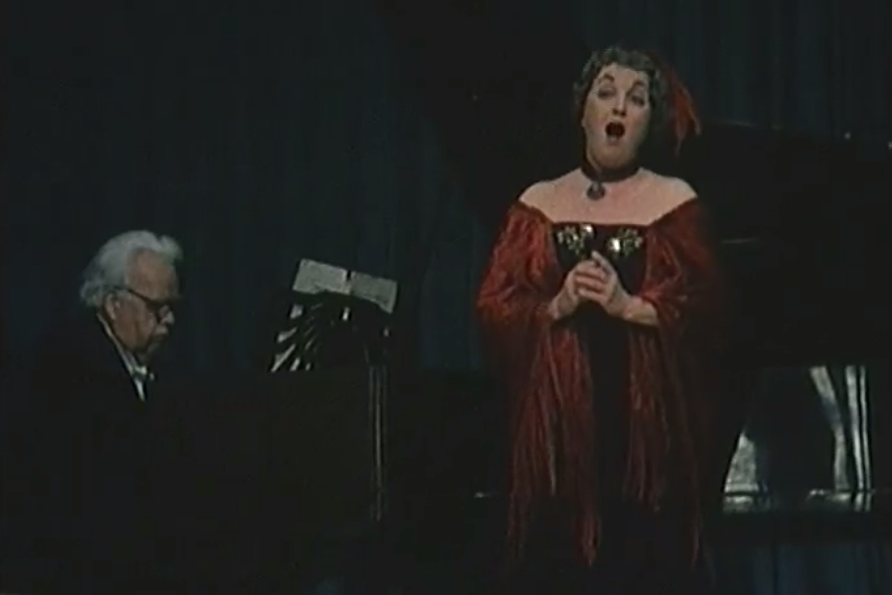
Matador
Kirsten had a fine cameo appearance as an old-fashioned concert singer in the fourth part of the famous TV-series Matador.
She told me about the recording, „I had to appear ridiculously early for the recording. You know, sometimes you have to vocalize for a long time to get in shape in the morning, and sometimes you just got it right away. This morning I just got it and director Balling said, ‚It is goddamn nice to work with a professional‘. They were supposed to laugh at me performing, but I did not want to sing badly, so I suggested that I made some primadonna allures, and it just worked.“
https://www.dr.dk/bonanza/serie/154/matador/40274/matador—0424-skyggetanten-
Kirsten Hermansen as the Victorian concert singer Amalie Hagensen in the Danish TV-Series Matador with the pianist Hans Meyer Petersen. Director Erik Balling 1976. 23:25-27:43
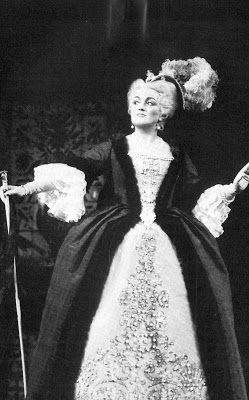
Few recordings
Already before her retirement from the Opera, she 1972 had begun teaching at the Royal Danish Acadamy of Music. 1981, she was given a professorship. Among her students were Tina Kiberg, Elsebeth Lund, Susse Lillesøe, Michael Melbye and Johan René Schmidt.
Considering Kirsten Hermansen’s great radio career, which was crowned with a concert performance of Bellini’s Sonnambula, there are amazingly few gramophone recordings with her.
Very early there is a 78-recoriding with ao. Weyse-songs. On LP she recorded the Elf-King’s Daughter in Gade’s Elverskud – The Elf-King’s Daughter, excerpts from the Fledermaus and the final scene from Rigoletto.
(Sten Høgel, Danish Female Biographical Lexicon, 2003)
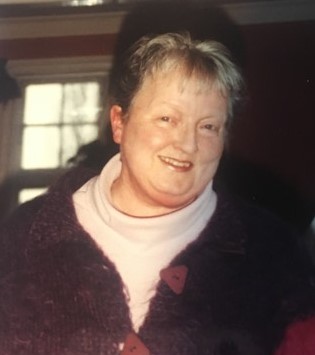
70 years is no age at all
I always spoke cheerfully and at length with her on her birthday. When she turned 82, she said, „Yes Mads, now all my sisters have died. So now I’ll visit my brother-in-law, He always had an eye for me, but I did not want to do anything with me while my sister lived.“
The following year she said „When I turned 70 a lady said, ‚That is no age at all‘ I understand that today.“ Two years later she died. Thank you for everything, dear Kirsten. You knew all that which cannot be learnt from reading books, you saw and understood me and opened the doors the the most fantastic worlds.
This article is a slightly revised version of my obituary which was printed in the paper Kristeligt Dagblad at Kirsten’s death in 2015. A great thanks to Sten Høgel for allowing me to use his beautiful biographical article from Danish Female Biographical Lexicon and to Anne Grethe Lassen and Eva Hermansen for the lovely pictures.
Neueste Kommentare